The road from Puno to Copacabana (two cities on the coast of Titicaca, one is in Peru, other is in Bolivia) and border crossing didn’t take us long. The border was located in the middle of the market with old ladies in colorful skirts who were selling sweets and snacks. “Russia?” – The border guard stamped my passport with a wide smile on his face. “Eres bienvenida! At the border, we put a visa only for 30 days, but if you want to stay longer, it can be easily extended in any major city.”
Bolivia greeted us by colors of beautiful skirts and funny hats, fragrances of bakeries, party in honor of a certain saint who passes right in the middle of two borders, ie. theoretically in Nowhere.
Copacabana. Not a luxurious Brazilian beach, but just a tiny town on the coast of Titicaca, living on the tourism from cruises to the islands and countless hostels and restaurants. We did not like it – high prices, guides trying to sell you their tours in every corner, generally it didn’t have good vibes. We bought food, gas, water and we went to the Isla del Sol with our tents to camp.
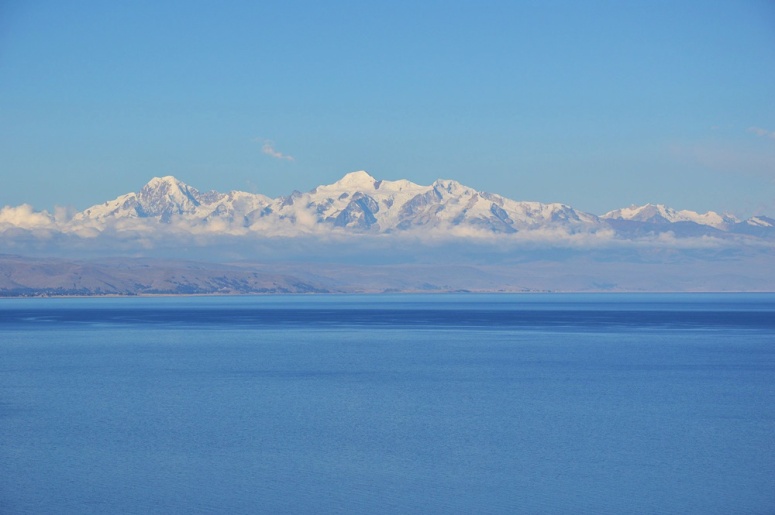
Ferry was slowly sailing along Titicaca. Views were nice, with glistering blue water and snow capped mountains. I met three tourists from Russia on our ferry- the only ones in six months of traveling. Finally we reached the island.
– 10 bolivianos, entry fee to the island – mustached man with a malicious grin stopped us right at the gateway.
“For what we are paying? Is the entrance to the ruins at least included?” – We asked him frustratedly. Nobody warned us about the additional payment. But it was just a beginning.
– All included. – the man grumbled the money and didn’t want to continue the conversation.
“Everything” turned out to be “nothing”, since part of the island with ancient pre-inca ruins was blocked by locals living on the other side of the island. They have on-going dispute between South and North about tourism. It lasted at least few last months but no one have even mentioned it.
The main priority of Titicaca’s tourism is to get money from tourists. The first impression of the country was spoiled.
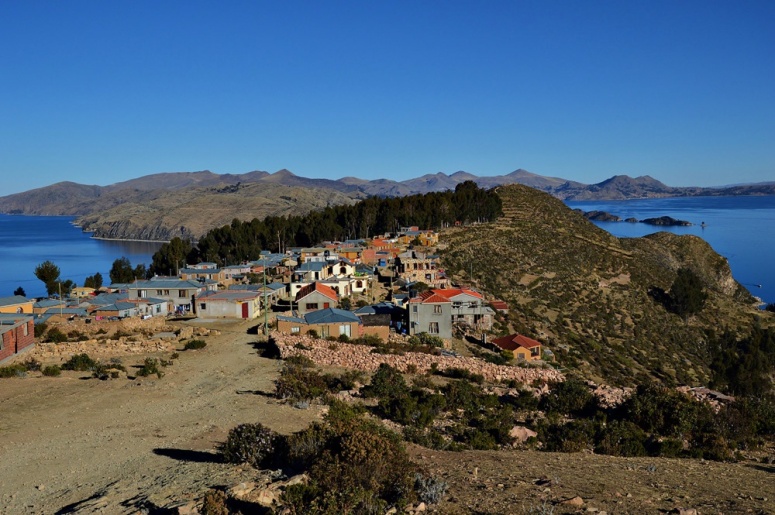
We climbed the stairs upstairs to put our tent with a stunning view of the lake. Except this incredible camp site (which was totally free!).
We planned to walk to the ancient ruins, but old woman stopped us after a kilometer of the way, saying that path is closed due to the conflict of South and North of island.
Except our incredible camp site I didn’t like anything else about Titicaca. Don’t get me wrong, it is a lovely lake and probably it would be interesting to see those ruins and have a long walk on the island, but it is way too expencive for what you are getting.
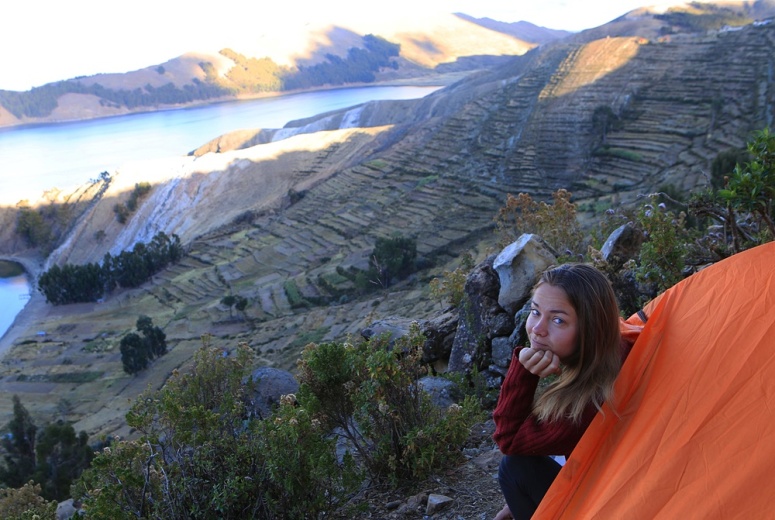
We went back to the campsite, cooked rice with tuna watching sunset, disappointed and tired from the long road. We felt the height of 4000m – we could not get enough sleep, we woke up with a feeling of lack of air. However, did I say that this camp site had an awesome view?
Recomendations : I can’t advice to visit Isla del Sol at the moment (August 2017). Carefully check which part of the island is available for visiting. Yumani part is very small and doesn’t have anything to see while most of the island belongs to the Challampa part.
Expectto pay extra bs here and there (for passage through a private area and other little thing).
Generally, there is two main reasons why tourists come to Titicaca. Peruvian side attracts by it’s floating islands of Uros, while the Bolivian side offers to visit Isla del Sol and Isla de la Luna, two very important for Inca culture islands.
Boats on the island of the Sun leave twice a day, at 9 and 13h. From there you can take a second boat to the Isla de la Luna (from Yumani port) but you will have to return first to the Isla del Sol and only after take a boat to Copacabana – there is no connections between Isla de la Luna and main land.
Where the Inca civilization was born
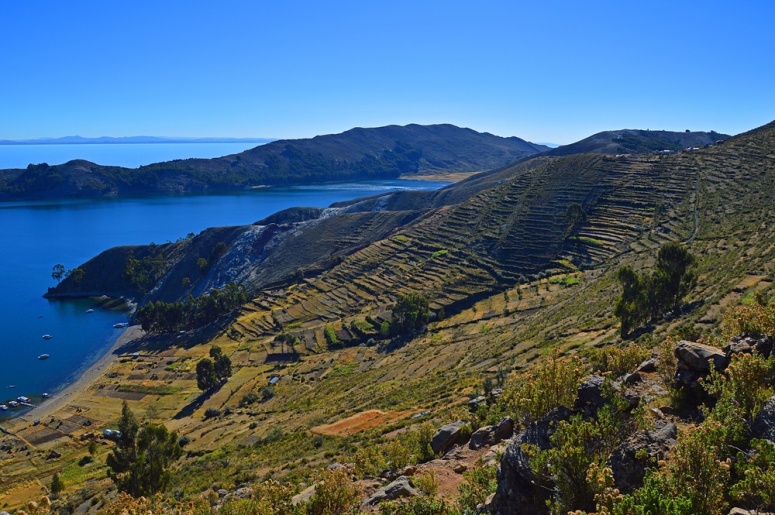
Incan mythology says that in ancient times the Earth experienced a Global Flood and terrible natural disasters, and the whole planet was plunged into the darkness and cold.
God Viracocha came out of the Lake Titicaca and ordered the sun and moon to rise. Sun and Moon were born here, on the Isla del Sol and Isla de la Luna. Then he went up to the hill of Tiwanaku, where he created firts man and woman and began to settle a new world.
These islands and a hill are sacred for the Inca civilization. The founder of the Inca civilization, son of Sun, Manko Capac and his wife, Mama Okyo, were born here as well.
According to some legends, Vicarocha was a white god. He settled on the island with his white skin friends, but he didn’t live long there – local tribes started a war against strangers, and Viracocha had to leave the island. Leaving, he said that he goes where the sun rises, but he will return again. This legend played a cruel joke with the Incas when the Spanish conquistadors invaded their lands – some tribes perceived them as a returning white God.
Floating islands of the Uros
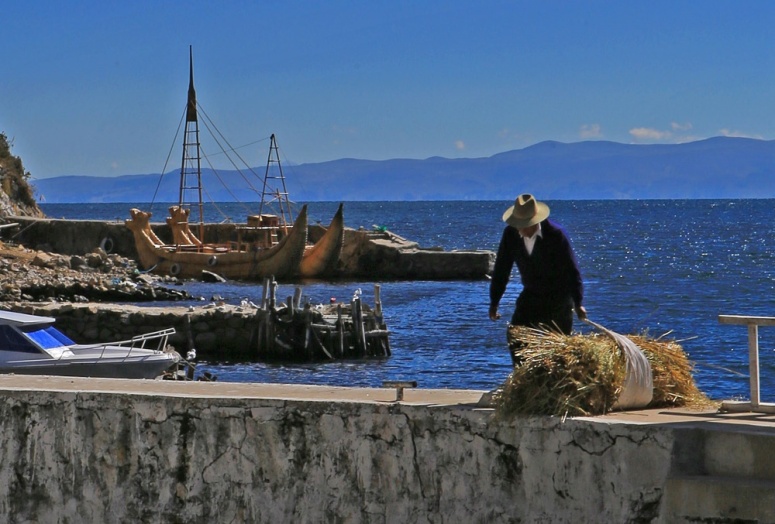
In addition to the legendary islands of the Moon and the Sun, Lake Titicaca is known for the floating islands of the indigenious tribe called Uros (on Peruvian side of the lake). Before Incas appeared on this lands, indians lived on the shore. They didn’t want to become Inca’s slaves though they moved directly to the lake, constructed floating islands of reeds. During peaceful days islands were anchored but if there was a risk of invation, Uros people could easily move with their family and home to another place.
The Incas have disappeared. The culture of Uros is still alive.
Of course, what we will see now is only tourism, the last “real” uros died in the last century. Nevertheless, it is interesting to meet ancient culture.
From the same reed Uros built excellent boats, the most famous masters lived on the island of Surikui, in the Bolivian part of the lake. They built a boat for the famous tour of Tour Heyerdahl, on which he crossed the Atlantic Ocean.
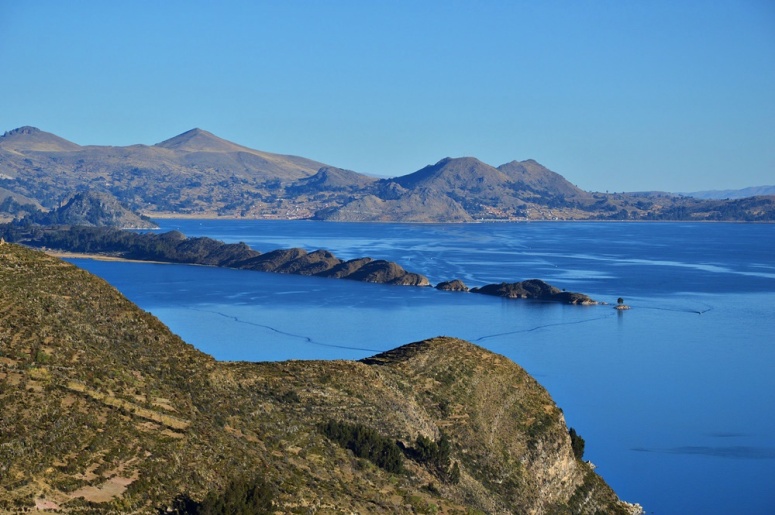
What is the Titicaca lake?
Titicaca is a highland lake in the Andes, located in two countries, Peru and Bolivia, at an altitude of 4000 m. This plateau is entirely covered with active volcanoes and the terrain continues to change. Scientists believe that Lake Titicana was at sea level millions of years ago (on the slopes of the mountains, geologists discovered traces of the waves and the remains of marine animals, marine fish still live in the lake), but as a result of tectonic activity a part of the reservoir rose together with the grown mountains and formed a practically inundated high mountain lake.
Three hundred different rivers and streams flow into the lake of Titicaca, but only one river Desaguadero drains from it, which flows into the inundated Lake Poopo. Where does all the water of these numerous mountain rivers go? At an altitude of 4000 m. sun is very active and a lot of water simply evaporates.
